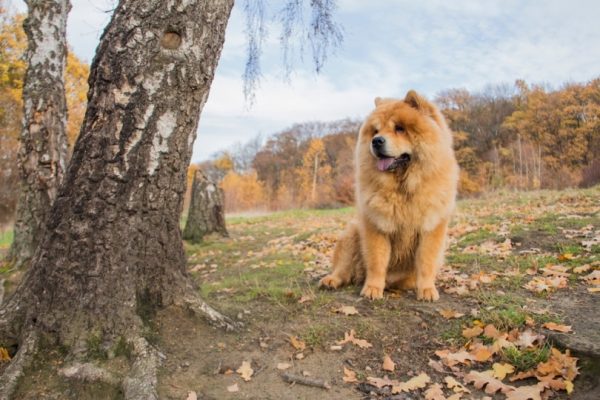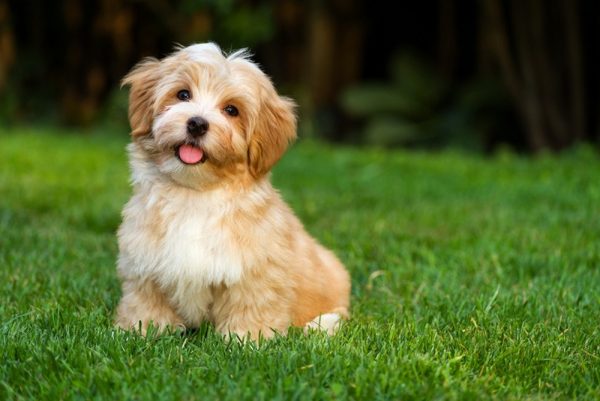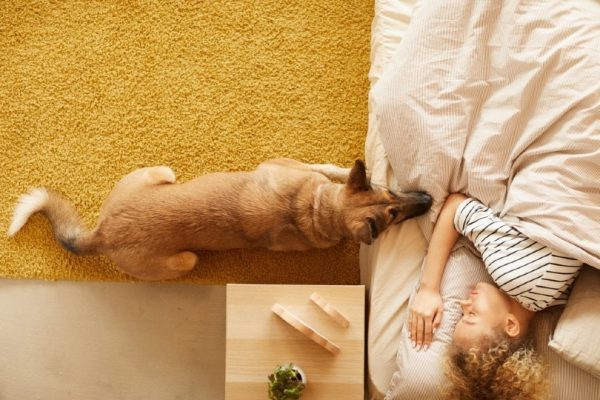In this article
View 8 More +The Bascottie may sound like a delicious cookie you’d dip in your morning coffee, but it’s actually a hybrid dog breed mixing the Scottish Terrier and the Basset Hound. These adorable pups are as spirited, charming, and affectionate as their parent breeds, but they’re definitely not the right fit for every family.
Breed Overview
Height:
9–15 inches
Weight:
19–65 pounds
Lifespan:
12–15 years
Colors:
Black, brown, white, tri-color, brindle, wheaten
Suitable for:
Families with older children, apartment life
Temperament:
Confident, low-key, patient, charming, independent
The Bascottie combines some of the most prevalent personality traits of the parent breeds. This hybrid can have the feisty and independent disposition of the Scottish Terrier or the easygoing, friendly attitude of the Basset Hound.
Bascottie Characteristics

Bascottie Puppies
The Basset Hound Scottish Terrier mix is generally a very friendly and playful puppy. They may have inherited their Basset Hound parents’ genuine love of people and other pets or could be a little quieter like their Scottie parent.
The Bascottie isn’t a very popular hybrid dog breed, so finding a breeder that specializes in Bascottie puppies may prove to be a challenge. However, keep a close eye on the websites of your local shelters and rescues to see if one comes up for adoption.
Bascottie Breed Origin & History
Bascottie dogs don’t have an established breed origin or history like their parent breeds.
Basset-type dogs were first bred in France and Belgium. Friars of Saint-Hubert Alley were searching for a low-build scent hound capable of plodding through rough terrain. They were originally bred to hunt hares.
Scottish Terriers, as their name suggests, were first bred in Scotland. They were originally developed to hunt and kill vermin on farms, badgers, and foxes in Scotland.


Temperament & Intelligence of the Bascottie
Since the parent breeds differ, the Bascottie’s personality traits can vary from pup to pup. Generally speaking, these dogs tend to be outgoing, affectionate, and playful pets that bond closely with humans. They might not snuggle up on your lap during movie night, but they’ll be perfectly content sitting next to you.
The Bascottie can be standoffish with new people, which is why it’s essential to work on socialization when they’re puppies.
Because both parent breeds were born and bred to hunt, the Bascottie may have a strong prey drive. This makes them likely to chase small animals. Couple this instinct with the Basset Hounds’ inclination to follow a scent, and you could have a recipe for disaster. The Bascottie should always be leashed when walking in public to prevent them from following their nose and escaping.
Are These Dogs Good for Families? 🧑🧑🧒
The Bascottie can be a fantastic breed for families. These pups combine the friendly and easygoing attitude of the Basset Hound with the loyal and loving disposition of the Scottish Terrier.
However, Scotties are notorious for snapping, especially if they’re presented with or provoked. For this reason, families may want to wait until their children are a bit older before adopting a Bascottie. Once the kids are old enough to know, understand, and respect boundaries, this hybrid breed can make the perfect family pet.
The Bascottie could make a decent watchdog, especially if they err on their Scottie side. Though Basset Hounds bark when they see strangers approach, they’ll greet them happily. Adorable and sweet, yes, but not a trait you want in a watchdog. If your dog’s feisty Scottie DNA is more prevalent, they can be apt watchdogs, however.
Does This Breed Get Along With Other Pets? 🐶 😽
The Bascottie may get along with other family pets, but this isn’t always the case.
Basset Hounds are extremely friendly and easygoing dogs. Since they were originally bred to hunt in packs, getting along with other dogs and pets comes easy to them.
However, the same cannot be said of the Scottie. Scottish Terriers may be aggressive towards other dogs and animals, especially with dogs of the same sex. Training and socialization may be able to address such problems.
Additionally, since both parent breeds were bred to hunt, Bascotties may have quite a prey drive. Introductions with smaller animals and cats should be approached cautiously.
If you plan on being a multi-pet or multi-species home, it may be worth considering adopting your Bascottie at the same time as your other pet. If they grow up together, they may have better chances of living harmoniously alongside one another.

Things to Know When Owning a Bascottie
Food & Diet Requirements 🦴
The best diet for a Bascottie is one that’s designed for their life stage. Puppies need food for puppies, and adults should be fed food for maintenance.
An adult Bascottie should eat two or three times a day, though you may want to feed them more often as puppies. They may be prone to bloat due to the deep chest of their Basset Hound parent. For this reason, your pup should eat at least two meals daily instead of one big one to reduce their risk of developing gastric dilatation-volvulus.
Bascotties may inherit their Basset Hound parent’s keen sense of smell, so keep their food secure and sealed so they can’t sneak any between meals.
If your Bascottie has inherited their Scottie parent’s intelligence, we recommend buying them a puzzle feeder or snuffle mat to provide them with mental stimulation during meals.
Exercise 🐕
The amount and type of exercise a Bascottie needs can vary greatly depending upon which parent your pup takes after more. Generally speaking, you should expect to provide around one hour of exercise daily for these pups, typically in the form of a good walk and some playtime.
Basset Hounds are pretty laidback dogs and can be prone to bouts of laziness. That doesn’t mean you should slack off on the physical activity if your pup takes after their hound side more, though. They’ll still exercise daily to keep them trim and fit.
Scottish Terriers tend to be very energetic. They enjoy running, playing fetch, and going on long walks. They do best when given several opportunities daily to expend their energy in short bursts.
Training 🦮
Training sessions for the Bascottie should be kept short and sweet—15 minutes maximum. Try to think outside the box to keep sessions engaging and interesting for your pup. These dogs may be stubborn, independent, and aloof, but with time, consistency, and persistence, they can absolutely be trained. Since the Basset Hound tends to be highly food motivated, try to find an exceptionally “high value” treat they’ll go nuts over to encourage them to partake in their training sessions. Once you’ve found a treat your dog goes bonkers for, reserve them for training only so they won’t lose their value.
Grooming ✂️
The grooming requirements for your Bascottie will depend entirely on which parent their coat takes after. If they favor their Basset Hound parent in appearance, you’ll have a bit more work in the grooming department.
Basset Hounds can start to smell as their skin can be very greasy. Additionally, this breed is known for having a high amount of Malassezia yeast that naturally lives on their skin, so you may want to consider using an antifungal shampoo to prevent infections and yeast overgrowth. Make sure you dry the folds thoroughly to avoid skin irritation from moisture.
The trademark Basset Hound’s droopy ears and eyelids must also be cared for. Eye discharge should be cleaned daily, and their ears should be cleaned and flushed once or twice a week.
If they have the shaggy coat of their Scottie parent, it’s essential to clip or hand-strip it regularly to keep it from matting. We recommend brushing them every few days to keep on top of mats.
Health and Conditions ❤️
Bascotties may be at risk of developing any of the health conditions commonly seen in their parent breeds.
Due to their heavy skin folds and droopy ears, Basset Hounds are predisposed to numerous skin and ear problems. They can also develop hip or elbow dysplasia, carpal valgus, and patellar luxation. Their deep chest makes them prone to gastric dilatation-volvulus (GDV), a potentially life-threatening emergency. Their lower energy levels can also make them prone to obesity.
The Basset Hound’s trademark short stature is due to a genetic condition known as osteochondrodysplasia. This disorder can impact how dogs move and may cause enlarged joints, flattened rib cages, and other deformities.
Scottish Terriers, conversely, can be prone to “Scottie cramp,” a genetic disorder that causes spasms and hyperflexion/hyperextension of the legs. They can also develop von Willebrand Disease, a condition that affects the blood’s ability to clot, and hypothyroidism.
Scotties may have a higher chance of developing certain types of cancers than other purebred breeds. One study shows that Scotties have a 20 times higher risk of developing bladder cancer than other dog breeds.
- Skin conditions
- Ear conditions
- Hypothyroidism
- Hip or elbow dysplasia
- Carpal valgus
- Patellar luxation
- Von Willebrand disease
- Obesity
- Cancer
- GDV
Male vs Female
The most notable difference between male and female Bascotties is their size and strength. Males will generally be taller, stronger, and heavier than their female counterparts.
As for personality, there is no significant difference between male and female dogs, regardless of their breed. Small differences may be noted due to their reproductive hormones, however. If you remove the source of these hormones (via spaying or neutering), there will be less hormonally driven behaviors.

3 Little-Known Facts About the Bascottie
1. The Bascottie may be quite the barker.
The Bascottie can be a problem barker at times unless this behavior is addressed with training. Their Basset Hound parent, in particular, would have passed onto their puppies a propensity for barking. They may even bay and howl, especially if not given enough mental and physical stimulation.
2. The Bascottie can thrive in apartments.
Many dog breeds are far too energetic or large to be suitable for apartment life. The Bascottie is not one of these breeds. So long as they are taken outside for exercise daily, they can thrive in apartment settings.
3. The Bascottie bonds tightly with their chosen humans.
The Bascottie requires human companionship but not in a clingy way. They thrive on attention and affection but are also okay with spending some time alone.

Final Thoughts
The Bascottie is a rare and interesting hybrid that combines many of the physical and mental traits of its parent breeds. These dogs are loyal, intelligent, and affectionate toward their humans and can make great companions for singles, families with older kids, and apartment dwellers.
Since the parent breeds both have a history as working dogs, the Bascottie may have a strong prey drive. This can be problematic if you have other pets in the home, especially smaller ones. A prey drive can be addressed with proper training and socialization but may not ever be trained out of the dog completely.
Bascotties can be challenging to train due to their somewhat stubborn and independent attitude. They are trainable, but it does require patience, consistency, and many high-value treats.
The Bascottie may be challenging at times, but these sweet, loyal, and lovable pups add so much value to their human’s lives. They’re more than worth the work.


















